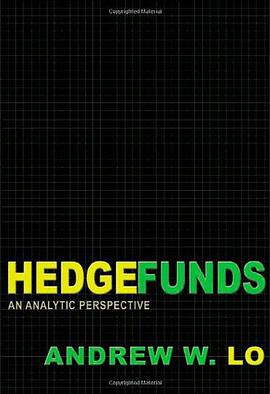-
提问 悬赏 求职 新闻 读书 功能一区
-
经济学人 二区
-
经济学论坛 三区
-
新商科论坛 四区(原工商管理论坛)
-
计量经济学与统计论坛 五区
-
数据科学与人工智能
-
金融投资论坛 六区
-
会计与财务管理论坛 七区
-
世界经济与国际贸易 八区
-
考研&考博&留学 九区
-
网络课堂 十区
-
站务区 十一区
-
休闲区 十二区
-
文库首页
- 热门文库
- 经管教学课件kindle电子书2万+全球顶级名校/投行英文文献 3000+世界顶级中英文杂志报刊【金融+经济+商学+国际政治】核心期刊投稿交流金融科技和互联网金融系列汇总【行业报告大全】BAFE文摘经管之家-Wiley文库【数学+统计+计算机编程】金融工程wwqqer系列汇总Shibor【历史+心理学+社会自然科学】2019经济报刊周刊精选经管之家-经典教科书出版社文库日新文库:Stata入门及进阶国内外经管期刊存档行为决策+行为经济学+行为金融经管之家-Springer文库Super CPA+CFA+ACCA+FRM Club学术杂志投稿经验微宽菜鸟吧产业研究院行业发展前景研究报告研报客-行业报告分享努力努力再努力Question & Answer(题库)金融万象Financial Vientiane学道会最美学习笔记Python ProgrammingFinancial Times 金融时报日新文库:高级经济学及经济数学上海财经大学课件、习题答案大全高清PDF【KYCHAN文库】外文杂志(sci ssci)投稿指南论文写作投稿实战IRT在家读MBA







 扫描二维码 下载应用
扫描二维码 下载应用



 京公网安备 11010802022788号
京公网安备 11010802022788号
您好,如需购买由经管之家论坛代理的普林斯顿出版社的原版精装书籍,欢迎添加客服微信咨询。请加客服微信:dzc123dzc
内容简介:
The hedge fund industry has grown dramatically over the last two decades, with more than eight thousand funds now controlling close to two trillion dollars. Originally intended for the wealthy, these private investments have now attracted a much broader following that includes pension funds and retail investors. Because hedge funds are largely unregulated and shrouded in secrecy, they have developed a mystique and allure that can beguile even the most experienced investor. In "Hedge Funds", Andrew Lo - one of the world's most respected financial economists - addresses the pressing need for a systematic framework for managing hedge fund investments. Arguing that hedge funds have very different risk and return characteristics than traditional investments, Lo constructs new tools for analyzing their dynamics, including measures of illiquidity exposure and performance smoothing, linear and nonlinear risk models that capture alternative betas, econometric models of hedge fund failure rates, and integrated investment processes for alternative investments. In a new chapter, he looks at how the strategies for and regulation of hedge funds have changed in the aftermath of the financial crisis.